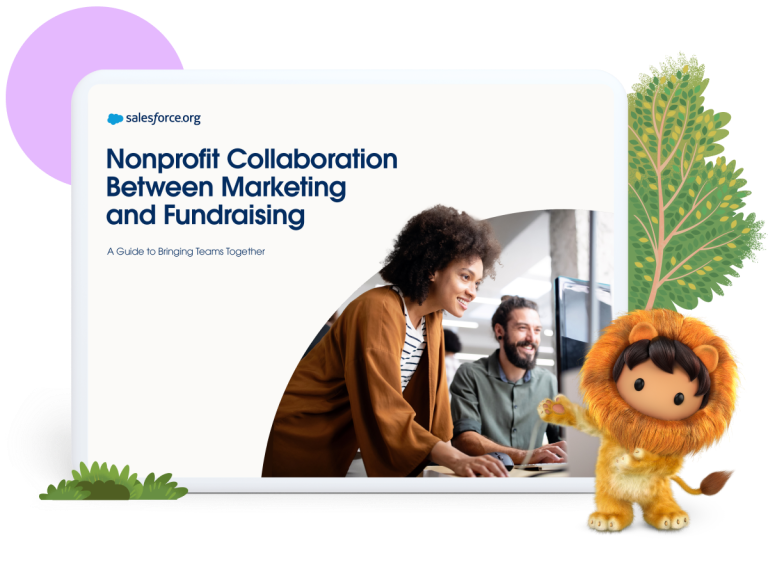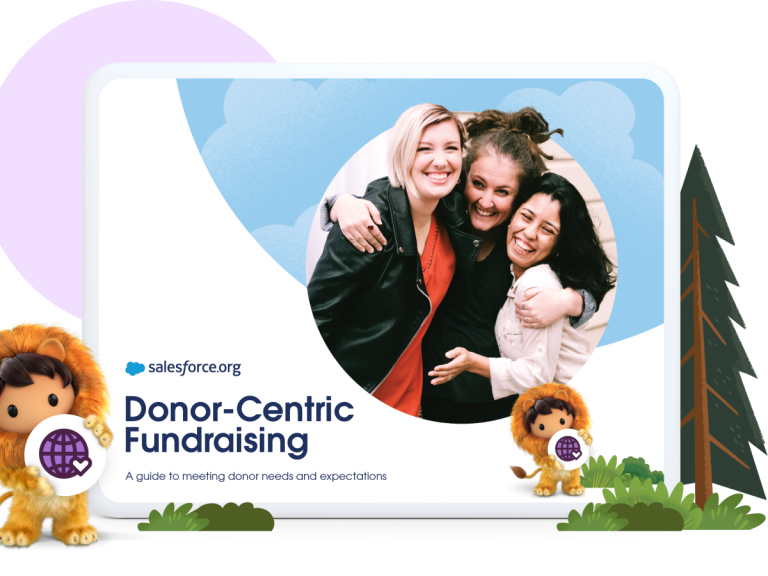Your donors are some of your organization’s biggest advocates. Their gifts fuel your organization and help further your mission. That’s why it’s crucial to understand how to keep donors interested and involved through donor engagement. In this article, we’ll explain what donor engagement is and offer tactics to bolster your donor engagement strategy.
What is donor engagement?
Donor engagement measures how attentive and involved donors are with your organization.
Donor engagement is the key to donor retention, as engaged donors tend to be happy donors who are actively choosing to stay in touch with your organization. In order to measure donor engagement, it’s important to keep track of which donors are engaged and which aren’t.
Here’s a list of donor engagement KPIs to keep track of:
- Number of events attended.
- Number of hours spent volunteering.
- Survey responses.
- Social media followers, likes, and comments.
- Reposts and shares on articles.
- Years spent as a donor.
- Website visits.
- Email opens and clicks.
- Past patterns of giving.
As you can see, there are many ways to track donor engagement that go beyond monetary support. Donors show they’re engaged by reading your emails, attending your volunteer opportunities, promoting your mission on social media, and many other ways.
Keeping track of these donor engagement KPIs gives you valuable insight into the mindset of your donors. For instance, donors who are no longer attending events, ignoring your emails, or not interacting on social media may be at risk of abandoning your organization altogether. Meanwhile, donors who are attending events and engaging online may be ready to increase their involvement.
In order to target donors effectively, you’ll also need to understand where they are in the donor cycle.
The donor cycle includes the acquisition phase when you’re trying to acquire a new donor, the retention phase when you’ve received a gift and are trying to maintain the relationship, and the upgrade phase when you’re trying to encourage recurring donors to repeat or raise their donations. Knowing the status of your donors will help you tailor your communications to suit their individual needs.

Nonprofit Collaboration Between Marketing and Fundraising
Learn how to align marketing and fundraising teams with shared goals, strategy, data, and messaging.
8 donor engagement best practices for your nonprofit
Now that you understand what donor engagement is and how to measure it at each stage of the donor cycle, let’s look at eight best practices to engage donors and keep them involved with your organization.
1. Get personal.
Avoid generic, cookie-cutter messaging when engaging with your donors. Instead, always opt for personalization when possible.
In order to send messages that are relevant and personalized to your audience, use segmentation. You can create donor segments based on their demographics, level of engagement, amount donated, and more.
Once you’ve established these segments, you can craft personalized, cross-platform content and messaging that would appeal to donors in those groups. Be sure to use donor names and donation amounts in your communication to further personalize your messages and help donors feel appreciated.
Use segmentation in your email campaigns to target the right audience. For instance, once an event passes, you can send emails to a segmented list of guests who attended to thank them for their time.

The Donor-Centric Fundraising Guide
See how nonprofits can meet and exceed donor expectations with technology.
2. Conduct donor research.
Conducting research on your donors will help you understand why they chose your organization to donate to — and what keeps them coming back.
Donor research involves gathering donor opinions in their own words. You can gather this research by conducting one-on-one interviews, sending out surveys, sifting through your social media channels, and reading online reviews for your organization.
Gathering donor research is incredibly valuable because understanding why your current donors give in their own words can shape future messaging aimed at attracting new donors.
Donor research through surveys also gives you insight into ways your organization could improve its events, communication with donors, and overall donor engagement plan.
3. Build trust with donors.
Building trust is vital for donor engagement. Donors need to trust you and your organization in order to feel comfortable donating.
One component of being trustworthy is being transparent. Share openly about what your organization is working on and how you’re spending donor money. Keep spending reports updated and make them available on your website to increase transparency. Ensure all the links work on your website so donors are able to find information easily.
Another way to build trust is by creating a solid brand for your organization. Having a consistent brand image and communicating with a steady brand voice will help donors become familiar with and feel more connected to your organization.
4. Go beyond the ask.
One of the worst things you can do is contact donors only when you’re seeking money. Donor engagement goes further than simply asking donors to open their wallets. Instead, go beyond the ask by offering value when you contact them.
For instance, reach out to donors and invite them to tour your facility or attend a welcome event. Make these events fun and welcoming without asking for more money.
Provide value to your donors when you contact them by sharing industry news, organizational updates, or fun community events. It’s also a good idea to send holiday cards and friendly greeting messages throughout the year. When you start to provide value and reach out for more than donations, you can build and strengthen genuine relationships with your donors.
5. Recognize your donors.
To improve donor engagement, be sure to take the time to thank and recognize all that your donors do for your organization.
The first step in recognizing donors is thanking them immediately after receiving their gift. You can thank them by phone, email, or even a handwritten note. You can also show appreciation by featuring donors on your social media channels. Dedicate posts to showcasing donors — with their permission — by sharing short bios about them and why they choose to donate to your organization.
Listing donor names in your organization’s newsletter or magazine and creating a donor wall in your office to display their names are other good ways to highlight their generosity and make them feel valued.
6. Create a membership program.
Creating a membership program is a great way to incentivize recurring donations. Your membership program would be open to select donors who have been contributing for a certain number of years or a certain amount of money.
Once in the membership program, offer donors member-exclusive benefits to keep them engaged. Examples include members-only newsletters or publications, early-bird event registration, free event tickets, and special events or parties throughout the year.
Consider asking what kinds of events and perks your members are looking for through biannual or quarterly surveys. This will make sure your members are happy in the program and are gaining value from it.
7. Be active on social media.
Social media is a fantastic tool for showcasing your organization’s mission. Use social media to provide updates on important projects, share testimonials, and highlight your donors and supporters.
Build a social media strategy that includes a regular cadence of posting high-quality, shareable content such as donor spotlights and event recaps. Mix up your content between photos, videos, and infographics.
Social media is also a way to engage with your audience through giveaways. Host a giveaway on your page where followers have the opportunity to win items in exchange for tagging their friends. This raises awareness for your organization and can bring in new donors while also giving back to your current social media following.
8. Make your website user-friendly.
Your website is the primary place where donors will seek out information about your organization and send in their donations. This means it’s very important to ensure your website is user-friendly.
Follow these tips to optimize your website for users:
- Make sure all buttons on your website work and that they direct visitors to the correct pages.
- Test your site speed and update any slow-loading pages.
- Ensure that your website is mobile-friendly.
- Add a prominent search bar for users to find what they’re looking for.
- Streamline content to avoid decision fatigue.
When it comes to your donation page, offer multiple ways for donors to send payments, and set up the page to process the donation in as few steps as possible.
Strengthen donor relationships with Salesforce
Make donor engagement easier than ever with Salesforce’s Nonprofit Marketing solution. This nonprofit marketing software gives you a single view of your community so you can create personalized donor experiences, measure engagement, and communicate across channels on one convenient platform.
